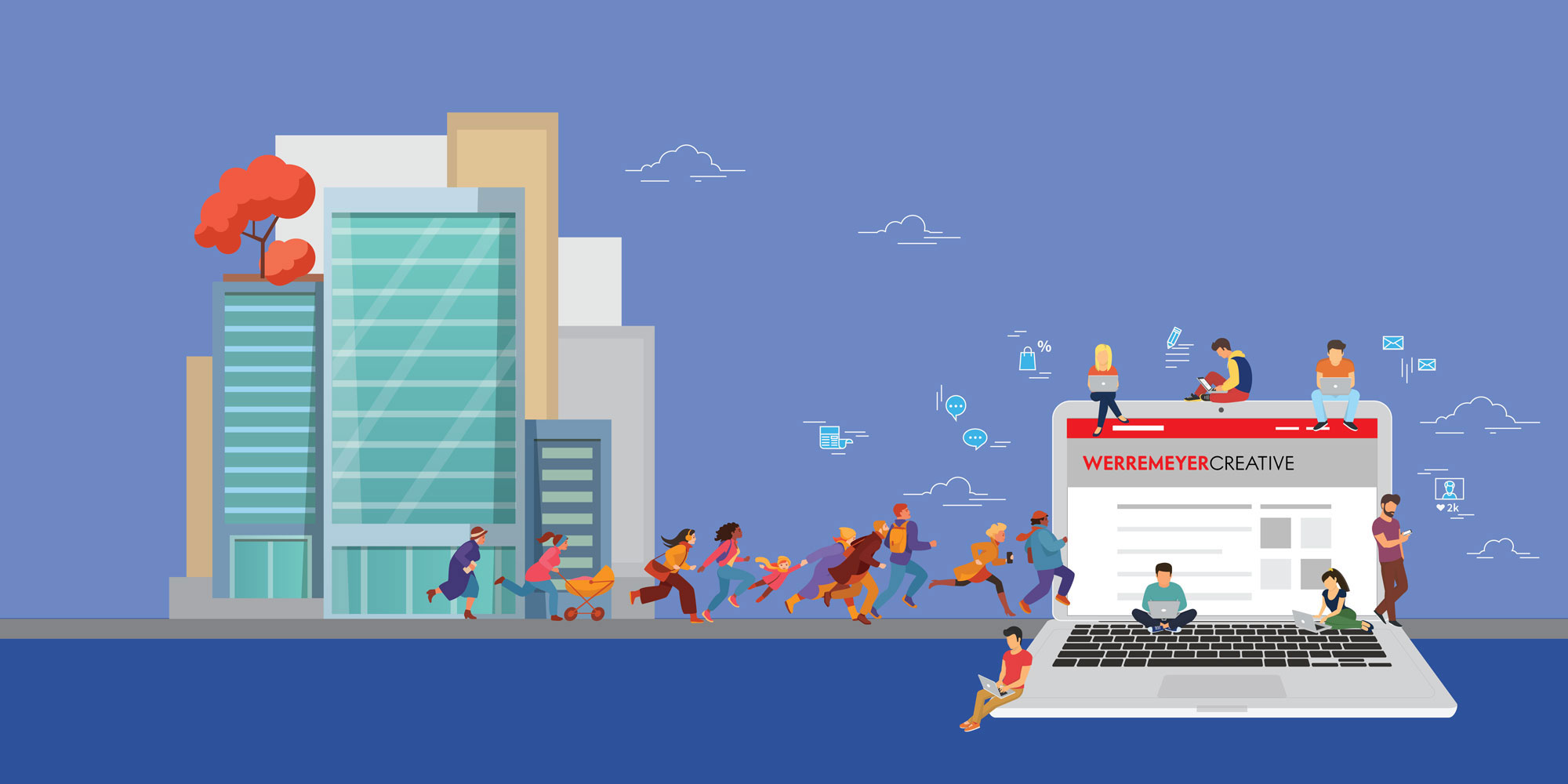You Need A Better Website
Really. You do. And if you have one, we can help make it more effective.
Today, your brand and your website are often one and the same. It’s essential, then, that your website reflects your best foot forward and acts as a point of pride for your business.
Your site should be your 24/7 business development engine; not a place that merely represents your brand, but one that drives it, grows it, and evolves alongside it.
While the sites Werremeyer Creative crafts are widely varied in aesthetic, intent and function, the process we use to create them is consistent by design.
Website Design & Development Process
Once we understand your goals, priorities, target audiences and project expectations, our website design & development process can begin. Here’s how it works:
Step One: Website Architecture & Journey Mapping
During the planning phase, we outline the overall site structure and customer journey. We identify which areas represent critical, unique areas of the site as well as determine site and design structure through the customer eyes. This step includes:
- Competitor Research
- Journey Mapping
- Project Planning
Step Two: Content Mapping & Strategy
The early involvement of stakeholders and subject matter experts (before visual or technical specifications are set) provides great insight and makes for a better end result.
Working from the outlined information architecture, we develop content models for what information the pages need to convey, how to prioritize that information, and how to communicate it through a meaningful user experience. We create interactive wireframes and share them with the client team so we can work collaboratively to test and iterate on the content flow.
- Card Sorting
- Site & Information Architecture
- Content Mapping
Step Three: Visual Design
While many start here, we feel that a deep understanding a brand’s identity is essential to tackling the design element. We begin the design process with style explorations which will be the foundation for the website interface and overall experience. We then define a visual experience that represents you and resonates with your audience, and cohesively brings them to life.
- Style Explorations
- Wireframe / Prototypes
- Usability Testing
- Visual Design / Pattern Development
Step Four: Continued Visual and Content Creation
After the key pages are established, we’ll work together on the remaining layouts for accessory page templates. Next, we’ll create all the various visual elements (imagery, icons, buttons, etc.) used throughout the site. Throughout it all, we’ll craft content that reflects your brand voice and is optimized for SEO best practices and ADA compliance.
Step Five: Website Development
This is where the magic happens. The step where our experienced development team breathes life into the approved content map and visual styles. The parts are as follows:
- Development and Staging Environments
- Admin Back-end Architecture
- Content Migration
- ADA Compliance
- Theme Development
- Responsive Development
- Meta & Title Tags
Step Six: Back-Office Architecture
For us, the user experience is not just what your visitors experience, it extends to the back-office as well. If the folks who will be using it don’t find the CMS easy to use, simple, and intuitive, it has no chance of success and the site will suffer. We work with you to understand how each person will manage their slice of the pie. Your team will be involved every step of the way to become familiar with the CMS and test and provide valuable input well before launch, including:
- Content Development and Optimization
- Meta & Title Tags
- ADA Compliance
Step Seven: User Acceptance Testing
This is where we test the site in a staging environment. We provide a link to your team which allows you to review, test, ask questions and provide feedback regarding the site.
Meanwhile, our Quality Assurance (QA) team will be hard at work stress-testing the site to ensure it can hold up to whatever a visitor can throw at it.
- ADA Testing
- Cross Browser Testing
- Mobile & Responsive Testing
- User-acceptance Testing
- Site-wide QA
Step Eight: Training
Because our clients are involved early, much of the “training” happens throughout the project lifespan. Before and after launch, we’ll provide a refresher and additional training for the personnel who will be responsible for updating and maintaining the site.
Step Nine: Website Launch
After the site-wide review is complete and all the feedback has been addressed, we will choose an ideal go-live date. On launch day, our development team will push all site files from Staging to the Production (live) server. Note: It can take up to 48 hours for full migration and caching before everyone sees your glorious new website.
Step Ten: Post-Development Support
The web development process doesn’t end after launch. There are several post-deployment tasks that will be carried out by our team, such as providing your team with project documents, working on your feedback and the post-deployment support and/or maintenance.
Because the real test of the site starts once it’s live for the users, we build a good chunk of time in every web project for post-launch fixes, updates, and support.
We pride ourselves on the results that we drive for our clients. If your brand needs a new website, or wants to optimize your current site, then let’s talk.
